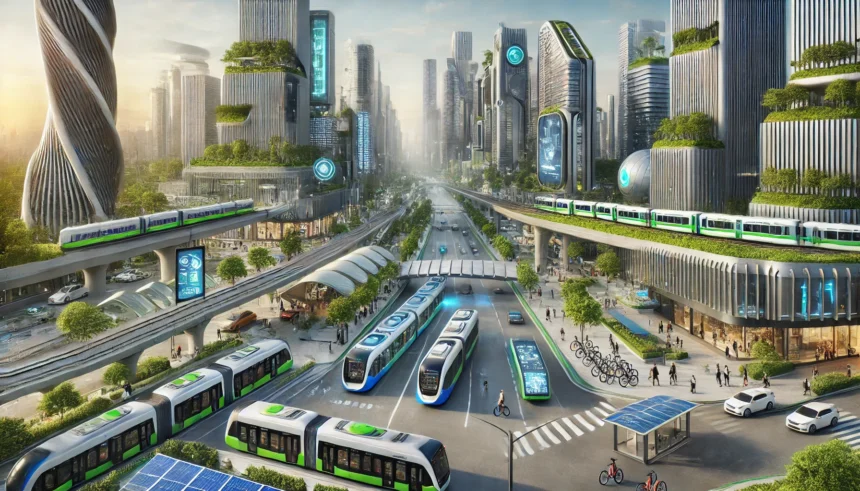Introduction to Smart Public Transit
The swift growth of urban populations has accentuated the demand for efficient public transit systems. The hustle and bustle of city life necessitates quicker commutes and flexible mobility options. Coupled with the pressing need to mitigate environmental impacts, cities today are exploring avenues that incorporate both innovation and sustainability in public transportation planning. Innovative strategies, therefore, become crucial to address these concerns, showcasing advancements that reshape how transit systems operate today.
This momentum is bolstered by the ingenuity of experts and companies like https://www.cta-inc.com/, who provide critical insights into designing cities that are both smart and sustainable. As urban environments grow, the focus should reside on strategies that prioritize seamless mobility, ensuring efficiency while hinting at a transformative future in transportation solutions.
Technological Innovations Leading the Way
Technology serves as the backbone of modern public transit systems, introducing a paradigm shift in urban mobility. Many innovations, such as autonomous vehicles, are set to revolutionize daily commutes. Self-driving buses and metro systems promise seamless navigation through cityscapes while ensuring safety and reliability. Real-time data analytics also play an integral role in optimizing routes and schedules, thereby reducing congestion and enhancing service delivery.
The role of smart city initiatives is noteworthy, as they demonstrate how connected solutions can remarkably improve the public commute experience. Smart cities employ IoT devices and data-driven strategies to monitor transit systems, providing insightful analytics for system improvements and user satisfaction. This integration ensures a promising reduction in waiting times and operational costs, solidifying technology as an indispensable pillar in future transit frameworks.
Sustainability: The Core of Future Transit
Sustainability is profoundly embedded in the blueprint of tomorrow’s public transit. Greener methods of transportation, such as electric and hybrid vehicles, have emerged at the forefront, aiming to curb emissions significantly. As public awareness of environmental conservation rises, cities are adopting cleaner practices to ensure vehicular pollution is minimized, improving urban air quality and fostering healthier communities.
In conjunction with vehicular innovations, renewable energy sources are gaining traction. Transitioning public transit systems to run on wind, solar, or geothermal energy creates a dual advantage—reducing operational carbon footprints while decreasing reliance on fossil fuels. Such sustainable practices resonate with the shared responsibility to address climate change, marking a paradigm shift towards resilient cities with future-ready transportation networks.
The Role of Public Policy and Infrastructure Investment
Infrastructure development and supportive public policy are critical components underpinning successful transit systems. Forward-thinking policies incentivize infrastructural enhancements that accommodate emerging technologies and promote sustainable practices. Key developments, such as dedicated bus lanes and integrated rail networks, are essential to catering to contemporary urban demands.
Effective collaboration between policymakers, city planners, and stakeholders drives infrastructure ventures that align with long-term urban goals. Infrastructure investment provides the foundation for deploying advanced technologies and expanded networks, fostering economies of scale while enhancing commuter convenience and overall city functionality.
Global Success Stories
Observing global examples offers valuable insights into the implementation of robust public transit systems that effectively cater to dynamic urban needs. Among the pioneers is Tokyo, heralded for its meticulously managed transit network encompassing subways and trains that connect the city’s extensive regions, illustrating exceptional time management and reliability.
Similarly, Amsterdam embraces a distinctive model by championing sustainable transportation through its pervasive bicycle network and electric trams. These success stories underscore the necessity for adaptable, city-specific public transit approaches. Tokyo’s transit system illustrates the adherence to punctuality and passenger comfort despite handling immense commuter volumes, offering an inspiring blueprint for cities worldwide.
Challenges Facing the Implementation of Smart Transit
Despite the apparent benefits, the implementation of intelligent transit systems faces formidable challenges. Fiscal constraints often hamper initiatives’ potential, straining public funding needed for comprehensive deployment. Simultaneously, navigating technological integration amidst existing infrastructures demands meticulous planning and execution.
Additionally, public resistance poses another significant hurdle. Drastic shifts in transit structures or the introduction of autonomous vehicles can elicit caution and skepticism from users. Transparent communication that highlights the advancements’ tangible benefits can alleviate anxieties and foster smoother transitions.
Strategies for Overcoming These Challenges
Proactive strategies harnessed through multi-stakeholder collaboration are vital for surmounting the impediments surrounding smart transit adoption. Public engagement emerges as a powerful tool, facilitating broader acceptance and trust in innovative solutions. Engaging communities through dialogue and demonstrations of technology efficacy can turn skeptics into advocates.
Furthermore, robust governmental support in the form of conducive policies and subsidies can bolster the success of such initiatives. Encouraging local and international partnerships can enhance technological exchange and financial consolidation, paving the way for pragmatic implementations of next-generation transit systems, which are essential for meeting the future city’s demands.
Conclusion: A Vision for the Future
As cities prepare for the challenges of tomorrow, the evolution of public transit remains a cornerstone of sustainable urban development. By marrying technological innovations with sustainability initiatives, cities not only augment their transportation networks but also enhance residents’ quality of life. The foresight in adopting these strategies signals a commitment to fostering urban ecosystems that are efficient, livable, and environmentally responsible, heralding an era where smart transit becomes the norm, powering the cities of the future.






